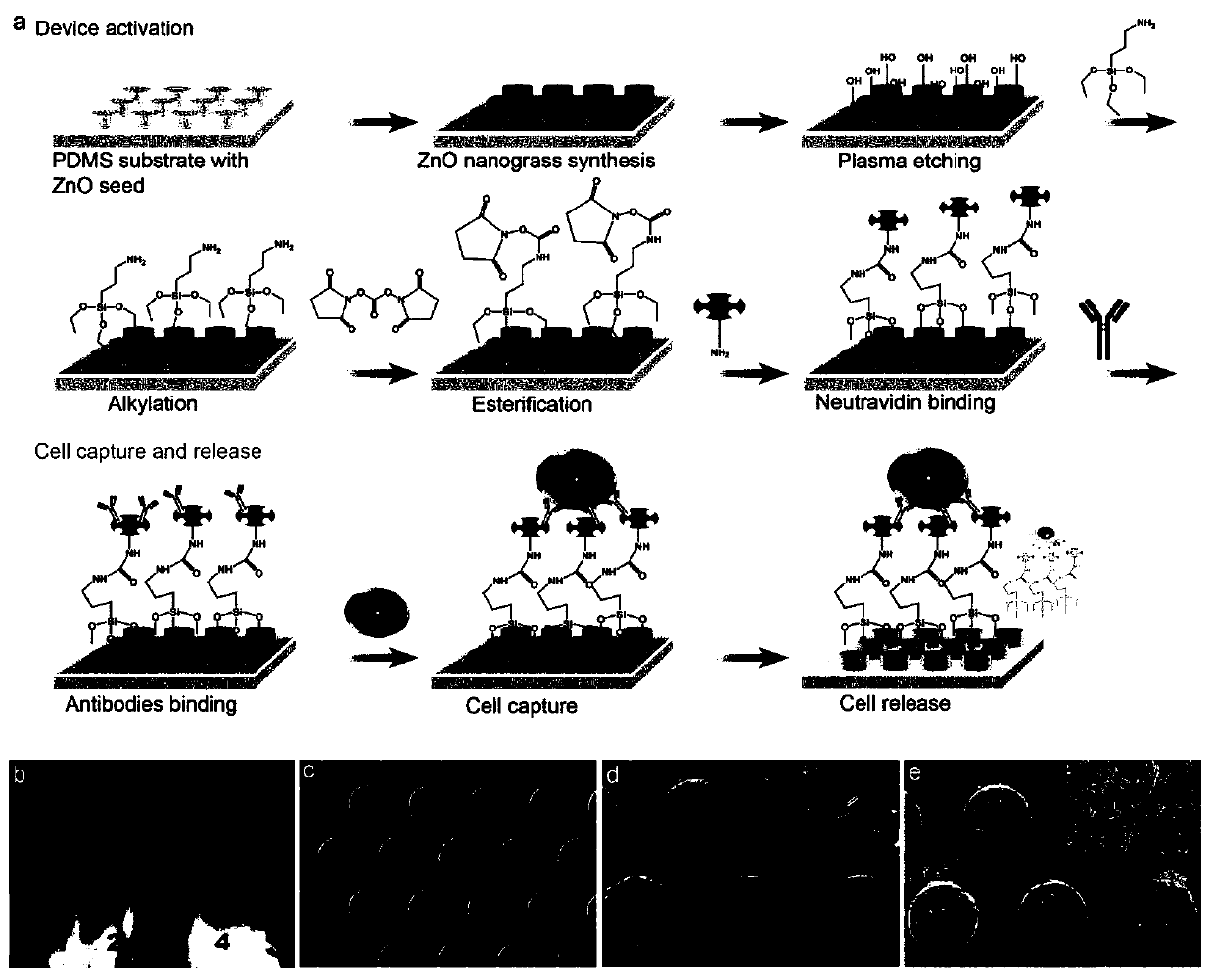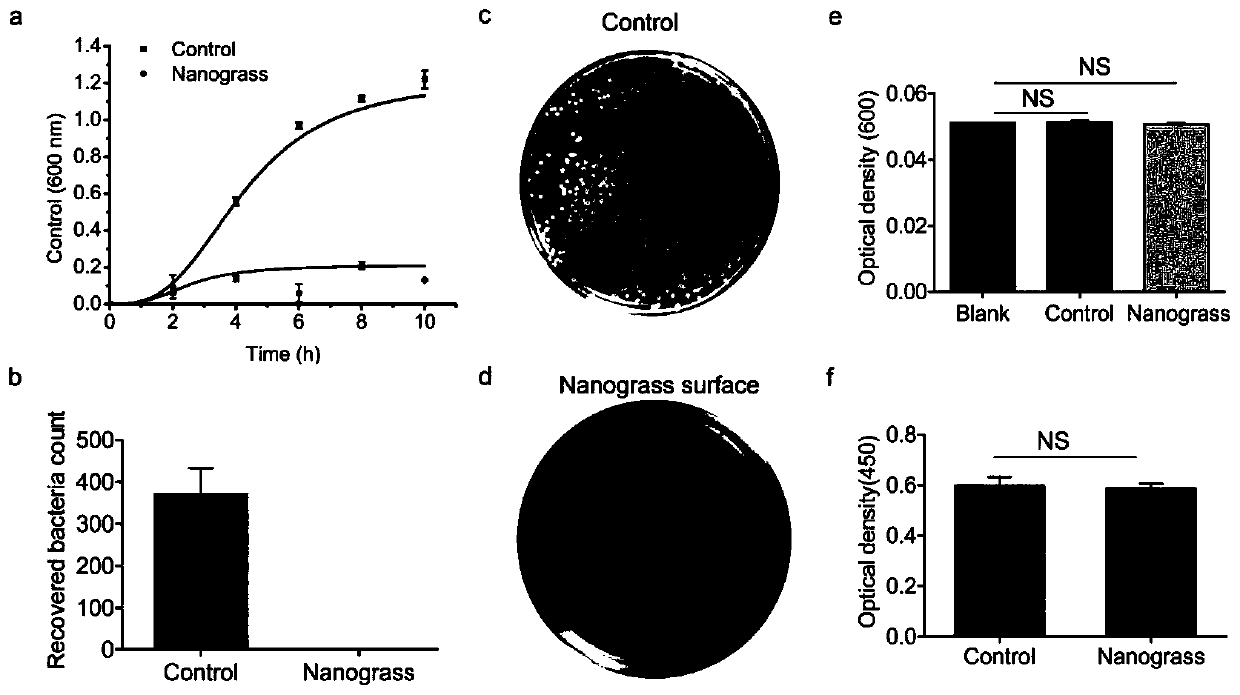Antimicrobial and recyclable cell capture device and recycling method thereof
A technology for capturing devices and cells, applied in the field of modern medicine, can solve the problems of low specificity, waste, and low purity of size-sorted CTCs, and achieve the effects of wide application prospects, market space, and strong antibacterial ability.
- Summary
- Abstract
- Description
- Claims
- Application Information
AI Technical Summary
Problems solved by technology
Method used
Image
Examples
Embodiment 1
[0030] Embodiment one, the synthesis of the PDMS substrate with multiple pillars
[0031] First, design the 3D structure with AutoCAD, and make a silicon wafer mold with the designed structure. The PDMS prepolymer and curing agent are mixed at a mass ratio of 10:1 and then poured on the mold, vacuumed by a vacuum pump, heated on a 90°C heating plate for 2 hours, and can be used after being peeled off from the mold. Such as figure 1 b and 1c show the PDMS substrate with cylinders.
Embodiment 2
[0032] Embodiment two, the synthesis of zinc oxide nanomaterial
[0033] Using the method of magnetron sputtering at 120°C for 30 minutes, a layer of 400-600nm seed crystal layer was grown on the clean PDMS substrate. Next, the growth solution was prepared. The growth solution was composed of zinc nitrate hexahydrate and urethane In the mixed solution composed of tropine, the final concentration of the two compounds was 10 mM. Soak the PDMS plate with the seed layer in the growth solution and incubate on a 90°C heating plate for 48 hours. Such as figure 1 d and 1e are ZnO nanomaterials grown on PDMS substrates.
Embodiment 3
[0034] Embodiment 3, the activation of the capture device.
[0035] After the nano-zinc oxide material is grown, the device obtained in Example 2 is subjected to plasma etching for 1 minute. Afterwards, the device was soaked in 4% (v / v) (3-aminopropyl)trimethoxysilane in ethanol and incubated at room temperature for 1 hour. After cleaning, soak the device in 10 mM N,N'-disuccinimidyl carbonate (DSC) solution in acetonitrile, incubate at room temperature for 10 minutes, and clean. Then, the device was added with 10 μg / mL neutravidin prepared in phosphate buffered solution (PBS), incubated at room temperature for 60 minutes, and washed. Then 10 μg / mL biotin-linked anti-EpCAM or anti-vimentin antibody diluted with 1% BSA in PBS was added. Incubate at room temperature for 1 hour and wash. For each wash, the device was soaked in PBS solution and placed on a shaker for 10 min. Finally, 5% BSA solution prepared in PBS was used to block for 1 hour at room temperature to reduce non...
PUM
| Property | Measurement | Unit |
|---|---|---|
| diameter | aaaaa | aaaaa |
Abstract
Description
Claims
Application Information
 Login to View More
Login to View More - R&D
- Intellectual Property
- Life Sciences
- Materials
- Tech Scout
- Unparalleled Data Quality
- Higher Quality Content
- 60% Fewer Hallucinations
Browse by: Latest US Patents, China's latest patents, Technical Efficacy Thesaurus, Application Domain, Technology Topic, Popular Technical Reports.
© 2025 PatSnap. All rights reserved.Legal|Privacy policy|Modern Slavery Act Transparency Statement|Sitemap|About US| Contact US: help@patsnap.com



